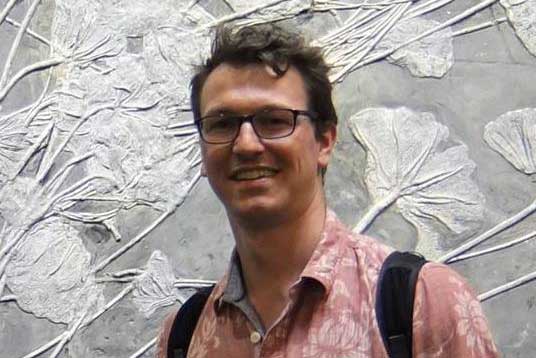
The small organisms that slip unnoticed through sand play an important role in keeping our oceans healthy and productive, according to a Florida State University researcher.
In the Journal of Experimental Marine Biology and Ecology, Jeroen Ingels, a researcher at the FSU Coastal and Marine Laboratory, explains that small organisms called meiofauna that live in the sediment provide essential services to human life such as food production and nutrient cycling.
“They contribute to sediment stability and waste breakdown,” Ingels said. “Their feeding process contributes to making low quality organic material available to higher trophic levels that then are fed to fish and seabirds. And then, potentially humans.”
That’s why researchers should be paying more attention to them as they try to understand more about the marine environment, our overall food chain and the processes that contribute to healthy marine ecosystems, Ingels said.
Ingels and colleague Michaela Schratzberger from the United Kingdom-based Centre for Environment, Fisheries and Aquaculture Science, investigated the evidence of roles of meiofauna in ecosystems to show that these organisms play an important role in how our ecosystems function.
“The idea was to look at meiofauna, which are the smaller organisms that live in between the sediment grains,” Ingels said. “But information about what they do in the sediment is scattered across literature.”
Meiofauna serves a variety of functions. In addition to serving as a food at a very basic level for other small organisms, they can also stimulate bacterial activity. Many types of meiofauna create mucus trails almost invisible to the human eye that stimulate bacterial growth, which in turns stimulates carbon turnover.
“You have to think about how prevalent these organisms are — they’re everywhere,” Ingels said. “If you put your towel on the beach, there are thousands if not millions of organisms beneath your towel. It’s important because they help regulate the Earth’s system as we know it. All the things we take for granted, the fact there are fish in the sea, the fact that marine ecosystems are so diverse and so on.”
The next step for Ingels and Schratzberger is to quantify exactly how large of a building block meiofauna is for our ecosystems.
“Meiofauna plays a role in that because while we can’t see it working, it’s doing its thing,” Ingels said. “They are responsible for simulating and promoting that system. For a fish to grow, when you go to the very basis of the food web, meiofauna would be the one of the first steps in helping food go up the food chain. So, if you take them away, that building block would affect everything above it.”
Ingels said he also plans to examine what kind of meiofauna lives off of the Gulf coast and how species diversity compares to other areas of the world.
“There’s a lot to discover out here out on our doorsteps,” Ingels said.




